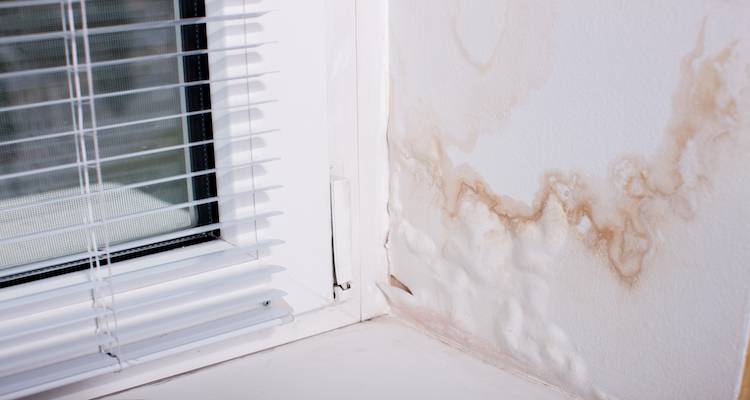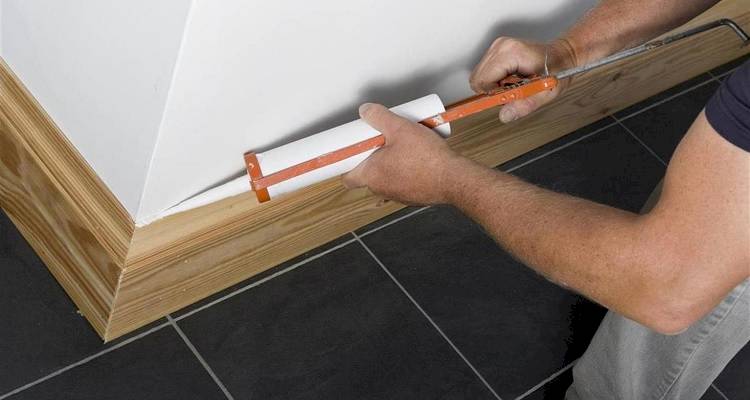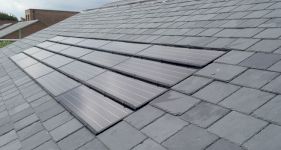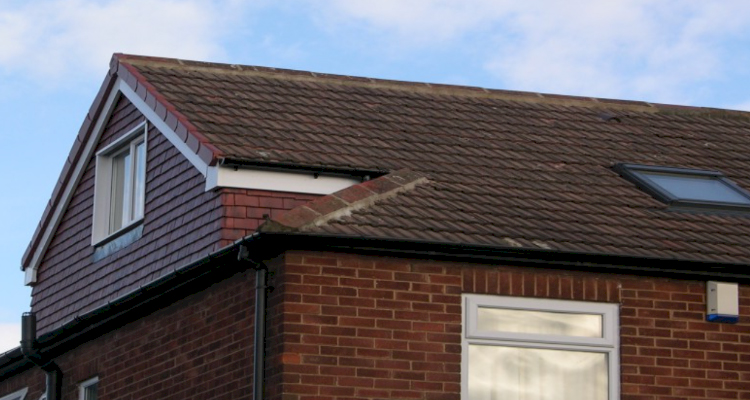How Much to Paint a Room?
- The average cost to paint a 12m² room is about £400.
- This type of job usually takes a professional between 1 to 2 days to complete.
- NEW! Our interactive room painting cost calculator — get a personalised cost estimate.
- Details of how much painters charge to paint rooms of different sizes and complexity.
- Factors that can impact the cost and timescales to paint a room.
- How to find and hire a local painter and decorator using MyJobQuote.
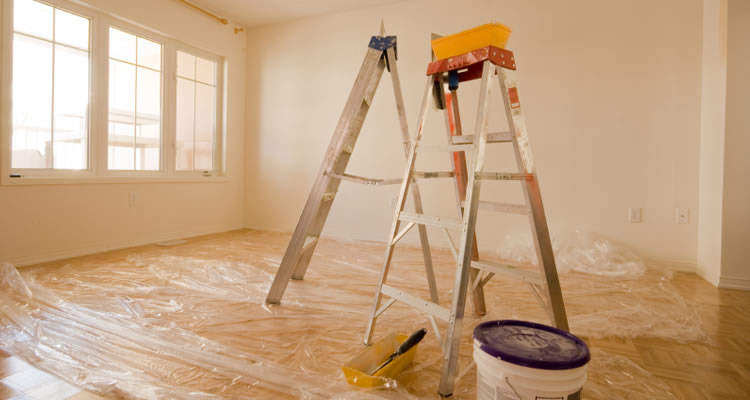
£400
Table of Contents
- How Much Does it Cost to Paint a Room?
- Factors That Impact Room Painting Costs
- How Long Does it Take to Paint a Room?
- Combining Other Decorating Jobs to Save on Room Painting Costs
- Additional Painting Supplies and Material Costs
- What's Involved in Painting a Room?
- Checklist: Hiring a Local Decorator
- FAQs
How Much Does it Cost to Paint a Room?
Painting a room is a fairly simple task for any painter and decorator and is something that any DIY enthusiast can undertake, but how much would it cost if you were to hire a professional?
A regular 4m by 3m room would take 1 to 2 days to paint, including all woodwork and coving. With most decorators charging around £150 to £250 per day outside of London, your total labour cost would be roughly £300 to £500.
To this figure, you'll need to add around another £50 for the paint itself, which gives us an average total cost in the region of £400.
To give you a better idea of how much it could cost to paint a room, we've outlined the average costs for some of the most common painting projects homeowners hire professional painters for.
Typical Room Painting Prices
| Room Type | Typical Size | Timescales | Cost Range |
|---|---|---|---|
| Box room | 7-9m² | 4-6 hours | £175-£300 |
| Bathroom | 6-9m² | 5-7 hours | £150-£300 |
| Kitchen | 10-15m² | 5-7 hours | £250-£500 |
| Small bedroom | 10-12m² | 1 day | £250-£400 |
| Large bedroom | 14-20m² | 1-1.5 days | £350-£660 |
| Small living room | 12-16m² | 1-1.5 days | £300-£530 |
| Large living room | 20-30m² | 1.5-2 days | £500-£990 |
| Hall, stairs & landing | 35-40m² | 1.5-2 days | £875-£1,330+ |
Painting Cost Calculator
Factors That Impact Room Painting Costs
While it may seem counterintuitive to hire a professional painter and decorator if you are on a budget, hiring a professional will often save you time, money, stress, and ensure a high-quality paint job.
Hiring a professional painter will ensure that your walls have a perfectly smooth finish, with all the correct prep work for the ceiling, walls, and woodwork followed, helping to make your paint job last longer.
When you choose to hire a professional decorator, there are several factors which impact painting and decorating prices.
Choice of Paint and Materials Used
First to note is that almost all of the quotes will be for labour costs. Interior painting costs can be influenced by factors such as the use of the same paint across multiple spaces and potential discounts based on homeowner preparations.
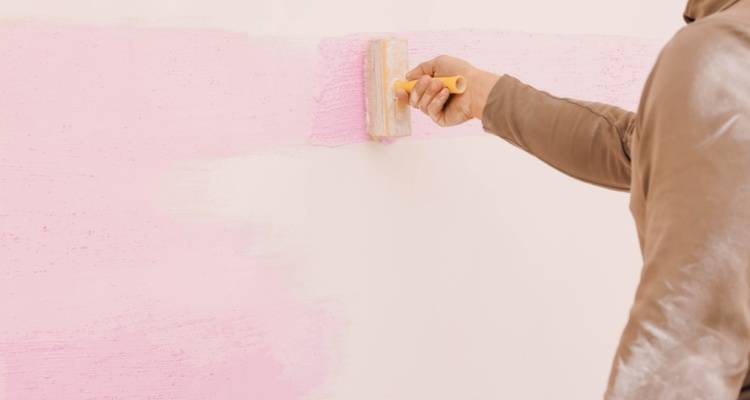
Quality paint is much more expensive than budget paint. Strategies to save money on supply costs include reusing supplies, buying paint in bulk, and selecting cost-effective paint brands.
What’s the main reason you’re considering painting a room?
However, there are other extras which are usually not included in standard quotes, yet can make a considerable difference to the price.
Location and Regional Differences
Location and regional differences also play a crucial role in determining painting costs.
Painters in urban areas, such as London, typically charge higher rates than those in rural areas. This is due to the higher cost of living and increased demand for city services. This means that prices can vary considerably in different parts of the country, and on the experience and quality of the painter.
As well as this, regional variations in labour costs, material prices, and local regulations can influence the overall cost of a painting job. When hiring a professional painter, it’s essential to consider these factors to get an accurate estimate and avoid any surprises.
The differences in finish quality and where you're located can have a big impact on how much your room painting could cost, as the different costs for painting a 15m² room in the table below show.
| Finish Level | Average Cost (London) | Average Cost (UK) |
|---|---|---|
| Budget | £360-£480 | £300-£390 |
| Standard | £450-£570 | £360-£465 |
| Premium | £510-£690 | £420-£570 |
Amount of Preparation Required
Old, stained ceilings will need to be washed with sugar soap before they can be painted, peeling gloss on woodwork will need to be completely removed, and if wallpaper needs removing, this will also add to the cost.
Wallpaper removal costs can range from £250 to £350, depending on the layers of wallpaper, the wallpaper type, and the condition of the wall.
Also, once existing wallpaper has been removed, you may reveal - or even cause - large patches of crumbling or missing plasterwork, which again will cost extra to make good before it can be painted. The cost to repair plastering ranges from £75 to £130 for patch repairs, while a full-wall skim can cost closer to £150 to £200.
"How much would it cost to paint a 15m² room in Yorkshire, including high-quality water-resistant paint and labour?"
Room Size and Complexity
The size and complexity of a room's layout can significantly impact your overall painting cost.
Larger rooms naturally require more paint and labour, which increases the cost. Painting a spacious living room will cost more than a small bedroom due to the additional materials and time needed.
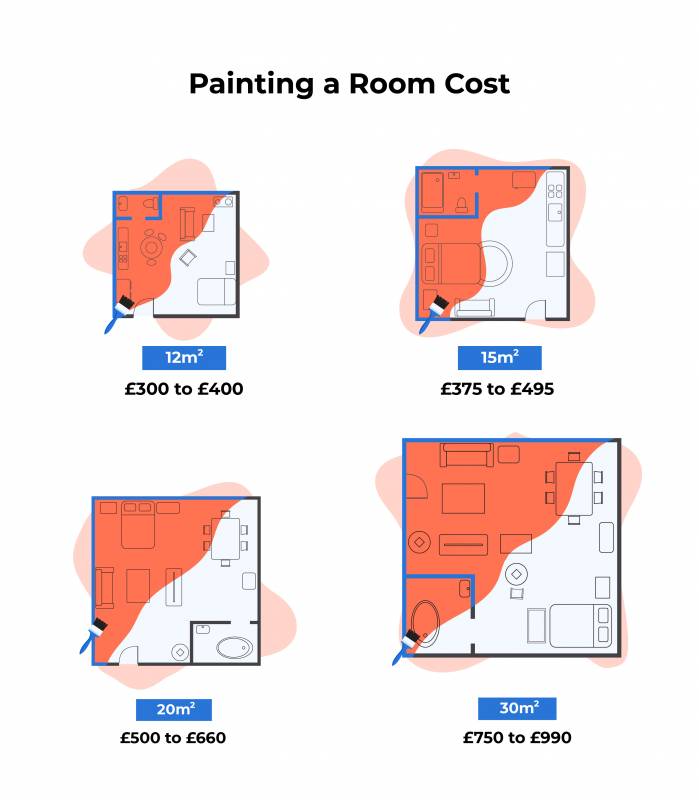
Rooms with intricate details - such as crown moulding, wainscoting, or built-in cabinetry - will demand more precision and effort, further adding to the cost.
A professional painter will take these factors into account when providing an estimate for your painting job, ensuring that all aspects of the room are considered.
Once you’ve hired a painter and decorator, make sure you agree to a fixed price for the work rather than a daily rate, as this will avoid costs quickly spiralling if problems occur and the work takes longer. Also, check whether or not the quote includes VAT before comparing quotes, and ensure all quotes are for the same paint quality.
"How much does it cost to professionally paint a 16m² bedroom, including labour and materials?"
Hiring a Professional to Paint Your Room
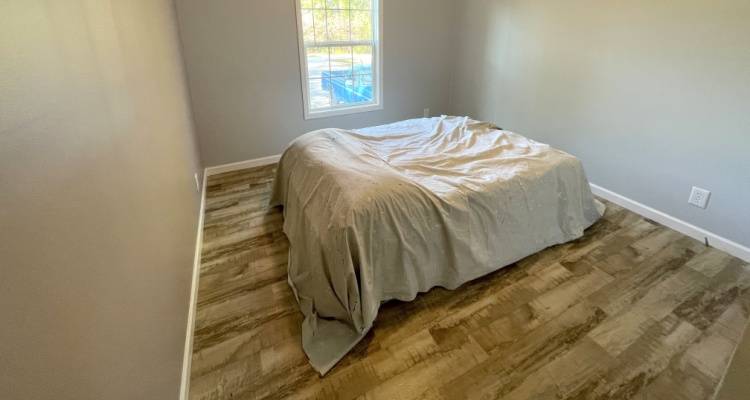
Hiring a local painter and decorator is a great way to avoid DIY nightmares.
Be aware, though: When you start to get prices from painters, they will normally assume that you'll remove all furniture from the room, as well as strip all existing wallpaper.
The table below shows how much your room painting costs could increase if you want the professional to handle these tasks, as well.
| Job Description | Cost |
|---|---|
| Paint room with 2 coats emulsion | £400 |
| Paint room with 2 coats emulsion and remove old wallpaper | £500 |
| Paint room with 2 coats emulsion, remove old wallpaper plus remove then replace all furniture | £525 |
| As above plus remove and refit carpet when finished | £550 |
House painting quotes will also assume that only minor repairs are needed to the existing wall and woodwork before painting, so small cracks in plaster or chips in woodwork are fine - but large holes or crumbling plaster aren't!
As standard, professional painters will apply two coats to walls and ceiling, plus an undercoat and then gloss to woodwork.
To give you an idea of how painting a bedroom costs compared to wallpapering, wallpaper hanging costs can range from £300 for walls already stripped or painted and in good condition, and can rise to £525 and above for walls needing more TLC - stripping, wall preparation, and lining.
How Long Does it Take to Paint a Room?
As we’ve outlined above, the room size and complexity are key factors when it comes to how much it costs to paint a room – and these factors also affect how long your decorating is likely to take.
The more preparation required, and the larger and more intricate the room, the longer it is going to take – and the more it is going to cost.
The table below gives you an idea of how long it should take a professional painter to complete some typical room painting projects.
| Job Description | Duration |
|---|---|
| Paint room with 2 coats emulsion | 1 day |
| Paint room with 2 coats emulsion and remove old wallpaper | 2 days |
| Paint room with 2 coats emulsion, remove old wallpaper plus remove then replace all furniture | 3 – 4 days |
| As above plus remove and refit carpet when finished | 4 days |
With the average professional painter charging between £150-£200 per day outside London, and £250-£350 per day in the capital, you should be able to estimate how much it's likely to cost to paint your room, in the same way most professionals will price their jobs. Don't forget to factor in the materials they will need, as well.
Combining Other Decorating Jobs to Save on Room Painting Costs
It can be wise to have a few jobs done while a painter or decorator is already at your property. Here's what you could consider to make the most of their daily fees:
- Stripping Existing Paint — If you're stripping existing paint from your home, you need to be mindful that there isn't any lead-based paint present. Chipping or fracturing this material can create hazardous conditions, leading to physical symptoms as a result of the toxic substance. Lead paint is most prevalent in homes built before the 1960s before it was banned from use in 1992. The cost of removing lead paint professionally and safely can be anywhere from £70 to £770 depending on the size of the affected area, and your removal method.
- Painting Skirting Boards — If you're having your bedroom painted, it's likely your skirting boards will be taken off to be repainted, or replaced entirely, during the course of the job. Painting skirting boards cost around £200, taking 1 day to complete - depending on the room size, and the condition of the skirting boards.
- Painting Staircases — Staircases are tricky to paint and can be incredibly time-consuming. The cost to paint a staircase ranges from £350 to £450 for the professional painting and priming of a 63.5 m² staircase.
- Painting House Exterior — Painting isn't just something for inside the home - you can also opt to have your home's exterior re-vamped if it's looking a little worse for wear. The cost to paint a house exterior averages £850 for a two-storey, three-bedroom house in the UK.
- Painting Exterior Doors — You can also choose to have your exterior doors painted, too, with an exterior door re-paint costing £200, and taking between 2 and 4 hours to complete. With any external painting work, it's important that you or your painter choose external paint, as interior paint won't be strong enough to withstand UV rays and outdoor elements.
Additional Painting Supplies and Material Costs
The type and quality of paint used can significantly impact the overall cost of a painting job. There are various types of paint, each with its own unique characteristics - and price points.
For example, matte paint is often chosen for its smooth, non-reflective finish, making it ideal for hiding imperfections. However, it is less durable compared to other types, costing £5 to £8 per litre.
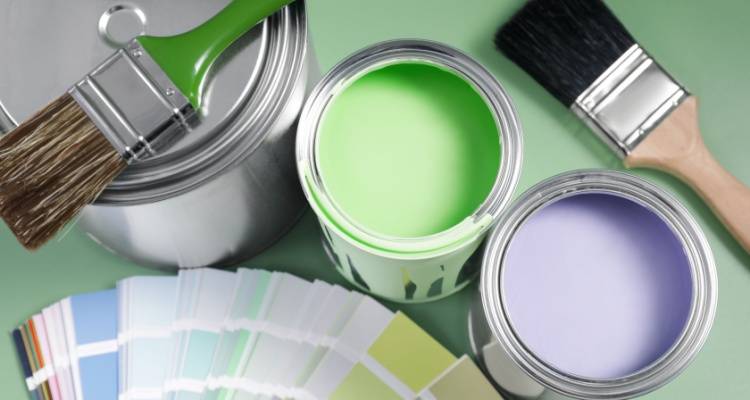
On the other hand, semi-gloss paint offers a higher level of durability and moisture resistance, making it suitable for areas like kitchens and bathrooms, but it comes at a higher cost, ranging between £9 to £18 per litre. It's a versatile option with reflective qualities, durability, and resistance to grime, grease, and moisture, making it a practical choice.
Glossy paint, known for its shiny finish and easy-to-clean surface, is the most expensive but provides excellent durability. Glossy paint can cost in the region of £12 to £25 per litre.
Here are some approximate costs for different types of paint:
- Matte paint: £5 – £8 per litre
- Semi-gloss paint: £8 – £16 per litre
- Glossy paint: £12 – £25 per litre
When estimating the overall cost of a painting job, it’s essential to consider the cost of paint and other materials. A professional painter can help you choose the right type and quality of paint that fits your specific needs and budget, ensuring a high-quality finish that meets your expectations.
Note that the costs mentioned above are approximate and may vary depending on the specific location, brand, and quality of paint.
What's Involved in Painting a Room?
Painting a room might seem like something you could do yourself, but there's a lot of skill involved in getting a smooth, durable, professional-looking finish.
This is why many homeowners choose to hire a professional decorator to paint their rooms.
When you decide to hire a professional, it's always a good idea to get quotes from multiple decorators. With MyJobQuote, you can get fast, free, no obligation quotes from decorators near you.
Should I start painting a room from the ceiling or walls? What’s the professional approach?
This is what to expect when you get a room painted by a professional:
Before the Job Starts
- Initial Visit & Quote — The painter will assess the room to measure the size and check the condition of the walls and ceiling. They'll discuss colours and finishes with you, and any additional steps required, for example, if the room is newly plastered.
- Room Preparation — They'll prepare the room, covering or removing furniture and protecting the floors, and masking windows, plug sockets, light switches etc., before cleaning all the surfaces to be painted to ensure the perfect finish.
- Surface Repairs — Any holes or cracks they find will be filled and sanded back to make sure they don't affect the finish.
During the Job
- Priming/Undercoat — An undercoat or primer will be applied first, necessary for bare walls or drastic colour changes, to make sure the final coat goes on properly and will last.
- Professional Application — The intricate corners and edges will be 'cut in' with fine brushes, and then rollers will be used to cover larger areas. A second coat will normally be required for the perfect finish.
- Drying Between Coats — To avoid streaks and patches, the painter will make sure to allow the correct drying times between each coat based on the type of paint and the conditions.
After the Job
- Final Touches — All the masking tape is removed and the room is checked for any areas that need touching up to ensure the perfect finish.
- Cleanup & Reinstatement — All the protective covers are removed and furniture replaced, so the newly painted room is returned to how it was - but looking much better. It can be a good idea to allow 12-24 hours before pushing furniture up against the walls or hanging anything.
I have some walls that are magnolia and some walls that have been re-plastered and painted white with a ghost coat. Do I need to paint the magnolia walls white before applying grey to ensure an even tone across all walls?"
Checklist: Hiring a Local Decorator
- Most quotes will assume all furniture will be removed from the room by the customer.
- If you want wallpaper removed, then this will add extra time and money.
- The vast majority of the cost of painting will be labour.
- Most decorators will include minor repairs to the walls in any quotes.
- Paint cost varies based on the type of paint finish, such as eggshell, gloss, satin, semi-gloss, and matte. Each type has different characteristics and suitability, with prices allowing for comparison and informed decisions.
- Make sure you get at least 3 quotes from different painters to get a fair quote for your project.
- Ensure your quote is in written format, and check that it includes everything you expect it to.




